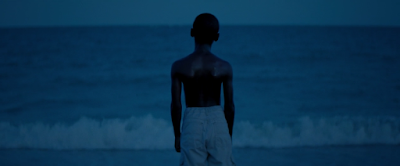Rules Don’t Apply is
an old-school Hollywood movie with throwback Hollywood pleasures. But it’s also unusual enough it's
never quite the movie you think you’d get. It starts in the early 60s at the
bottom of the business, with two fresh-faced young people ready to make a go of
careers in showbiz. There’s a meek but determined chauffer for the Howard
Hughes companies (Alden Ehrenreich) who hopes to one day actually meet the man
and propose a real estate venture. There’s a comely chaste Christian beauty
queen (Lily Collins) invited to L.A. to be under contract, put up in a fancy
bungalow, and given a salary of $400 a month while awaiting a screen test.
They’re each just one of many such people in the Hughes universe, drivers and ingénues
kept waiting for a day he may need them, underlings getting by despite the
rules and stipulations that come with their paychecks. Of course these two
sweet young people start making eyes at each other, progress to light flirting,
and eventually might even fall into something like unspoken love underneath
their contract’s strict no-fraternization policy. The setup is there for a
frothy farce, a gentle rom-com, but it keeps getting crashed into, stirred up,
distracted and diverted by the mad man running the show.
That’s the movie’s appeal, a handsome period piece comedy
steered by the choppy, unpredictable whims of its outsized supporting player.
Hughes, the eccentric billionaire, is by this time of his life retreating into
isolation and madness. He’s a figure of mystery, star-power held at first off
screen, then hiding in dark rooms or barking orders over the phone. When he’s
not around, his power and influence dominates nonetheless. It’s fitting, then,
that Warren Beatty, one of Hollywood’s most famous leading men once upon a
time, plays him. Now 79, the multi-hyphenate behind Reds and Dick Tracy hasn’t
appeared on screen in 15 years, a long absence for someone of his stature, so
his impeccably delayed arrival mirrors Hughes’ reclusiveness. When he finally
does appear, stuttering, drifting off topic, lost in his own thoughts, giving
in to his eccentricities, we can feel the sense of his fading glory by seeing
Beatty play up how little cool he brings to the part. He still has charisma,
but he funnels it into a figure who is losing his, and who maintains it through
wealthy and mystery. He has a great Movie Star entrance, but soon commands the
screen by being both more and less than you’d think.
Beatty, who also wrote and directed this passion project
(his first behind-the-camera work in nearly 20 years), uses himself sparingly.
He lets the picture sit squarely with the youngsters who are struggling to get
ahead by using Hughes’ erratic largess and ignoring or indulging his
inconsistent follow-through. This fizzy youthful possibility simmering as
sublimated romantic interest powers the movie’s rushing sensation of lives out
of control. Hughes is desperately trying to hang on to his business interests
as investors cast doubts on his ability to manage his assets while an odd,
stubborn recluse. He wants control – an idea that extends from his particular
instructions about every aspect of his life, down to the behaviors of his
underlings – even to the point of changing his mind simply because he can. (Or
because he makes so many frivolous micromanaged decisions he can hardly keep
track of them all.) It’s a tremendous part Beatty’s written for himself –
simultaneously fumbling with befuddled humor and carrying a constant underlying
gloom – which is all the more effective for occupying the unusual position of
driving the plot while staying on the margins.
Clearly wrestled into submission, the just-over-two-hours
final picture has four credited editors and a brisk pace, rocketing through
scenes and developments with a quick chop-chop-chop attitude. A host of great
actors (Martin Sheen, Matthew Broderick, Candice Bergen, Annette Benning, Haley
Bennett, Megan Hilty, Paul Schneider, Taissa Farmiga, Ed Harris, Amy Madigan,
Oliver Platt, Alec Baldwin, and many more) waltzes through small roles, clearly
enjoying chewing meaty material in fun scenes. None stay long, but all add
immeasurably to the texture and personality of the worlds in which our leads
swim. (The ensemble is so stuffed, the performers must’ve shown up at the mere
call to be in Beatty movie. Or maybe they all had larger roles in earlier
cuts.) The zippy speed feeds the fast pace of life lived according to an
unpredictable boss, and the rushing energy of young people trying not to be in
love. The pair at the film’s center do, after all, seem perfect for each other.
They’re cute – Collins with young Hollywood’s most expressive eyebrows, while
Ehrenreich is blessed with one of his generation’s most sympathetic half-squints
– trading rat-a-tat dialogue with screwball aplomb.
As the mechanics of the plot send the young nearly-lovers
together and then apart, into their own personal setbacks while chasing
diverging goals and unsettled futures, there’s a tinge of melancholy that
settles over Caleb Deschanel’s warm cinematography. Hughes, too, serves as a
funhouse mirror reflecting and refracting (in addition to compounding) their
problems. Here’s a man who turned his father’s company into a global success,
and still feels empty inside, trying to fill futile days with pretty women to
ogle, underlings to boss around, and technology to futz with. (There’s a pretty
terrific reaction shot of a speaker, dryly funny as an emphasis of loneliness
when one character’s over-the-phone revelation is met with icy silence.) Beatty
knows how to get the tragicomic mixture in exactly the right proportions, and
the film’s paradoxical frantic meandering settles into a lovely rhythm of
dramatic and comedic incidents, big laughs that can get swiftly choked off in a
poignant pause. It’s as spirited on the surface as it is sad and reflective
underneath even the bubbliest moments. It’s a big glossy movie working in the
spirit of a small scrappy one.














